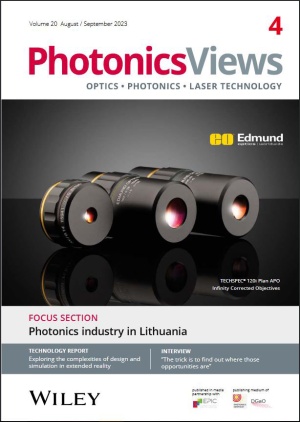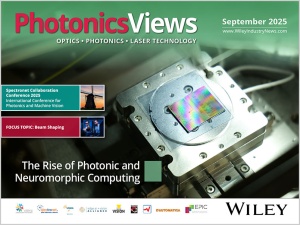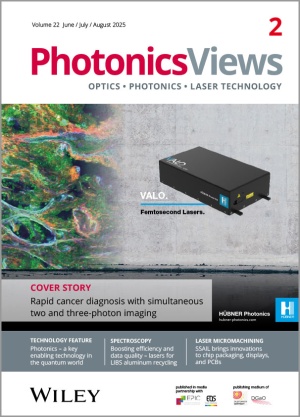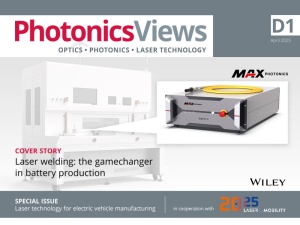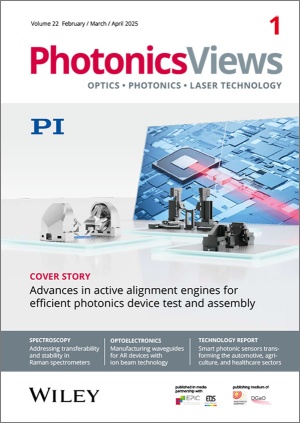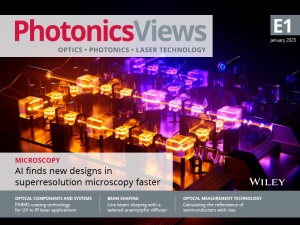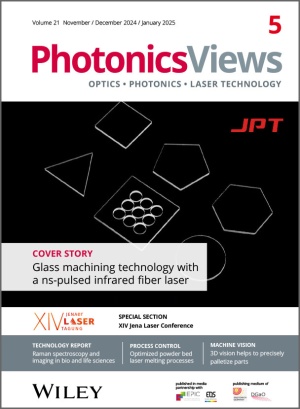Editorial
Julie Sheridan (Coherent Corp.)
Interview
Antonio Castelo-Porta (EPIC)
The head of the Swedish supplier of compact single-frequency cw lasers, pulsed lasers and laser combiners in an interview with EPIC's technology manager for biomedical and lasers.
Technology Report
Jérémy Picot-Clémente (EPIC)
As XR pushes the boundaries of immersive technology, the challenge of creating a flawless simulated reality presents unique design hurdles. In this critical analysis, we unpack the fundamental issues, identifying potential solutions and forecasting future developments in the XR landscape.
Country Report
Gediminas Račiukaitis & Kristina Ananičienė (both: Lithuanian Laser Association)
Starting from fundamental research just after the discovery of the laser, the Lithuanian laser industry is celebrating forty years since the first commercial company, Eksma, was established in 1983 to produce picosecond lasers. The sector has grown into a fully self-sustaining ecosystem, providing optics, ultrashort-pulse lasers, laser technology and systems to the global market. Today, lasers and optics are one of Lithuania's strongest and highest value-added industrial sectors.
Laser Optics
Lukas Ceizaris (Optoman), Gintarė Batavičiūtė (Lidaris)
Ultrafast lasers in various applications suffer from short lifetime optics due to high power levels and intense pulses. Typical laser damage testing methods are often limited to short exposure doses, which sometimes do not match real-life application requirements. To ensure long-term failure-free operation, lifetime estimation and low-loss absorptance testing should be used instead. Low-absorption dielectric coatings increase the lifetime and lower the total cost of ownership, benefiting the manufacturing, research, and medical sectors.
Review
Trends in Manufacturing
Modestas Vainoris, Ernestas Nacius, Paulius Šlevas, and Vytautas Sabonis (all: Altechna R&D – WOP | Workshop of Photonics)
The submicron era is here, and the projections show that the need will only increase for wafers, glass, ceramics, and metal parts with micron and sub-micron-level features on them. Such parts could be readily assembled into multi-layered chips or devices, but still require some dicing. The highly flexible FemtoGlass system with Workshop of Photonics' (WOP) patented cutting technology [1] offers highly efficient and precise dicing solutions with a small heat-affected zone (HAZ) and low surface roughness.
Optical Measurement Technology
Taras Lisouski (EssentOptics)
Optical coatings play an enormous role both in our daily life and in advanced research. Virtually any optical element – from a simple lens to the ones used in the sophisticated laser systems, space instruments or data transmission cabinets – have optical coatings. New designs of the coatings and new applications require an upgraded and often designed-from-scratch technology to meet the continuously growing thin film optical metrology specifications.
Previews
Product Report
The scan heads of the new intelliSCAN IV series set standards in terms of compactness, performance, and integration capability. Thanks to reduced dimensions and integrated water cooling, they provide greater stability and an impressive twenty percent increase in dynamics compared to previous models.
Trends in Manufacturing
Laser deposition welding helps to speed up the repair process and reduces costs. An important component for this is the new tracing technology from Laservorm, which records at exactly which point of the component which parameters have had what effect.
- Pages: 54-56
- First Published: 15 June 2023
- PDF
Technology Feature
Wilhelm Kaenders (Toptica Photonics), Alfred Leitenstorfer (University of Konstanz), and Florian Tauser (Toptica Photonics)
Motivated by the first laboratory demonstration of a self-referenced femtosecond frequency comb using a fiber laser, Toptica Photonics and the Ultrafast Phenomena and Photonics research group of Alfred Leitenstorfer at the University of Konstanz have established a direct link of collaboration since 2004. This long-standing knowledge transfer has now been recognized with the Technology Transfer Prize of the German Physical Society (DPG).
Laser Sources
Weather reports, climate models, or rocket launches – they all need precise data from the atmosphere. Scientists can use lidar (light detection and ranging) systems to shoot laser beams into the sky to acquire such data. The backscattered light can be used to calculate wind and temperature data at altitudes of up to 100 km. A team from the Fraunhofer Institute for Laser Technology ILT and the Leibniz Institute for Atmospheric Physics IAP has developed a portable lidar system that works autonomously. In the future, such systems could be mass-produced and combined into networks to provide high quality climate data.
- Pages: 60-63
- First Published: 15 June 2023
- PDF
Index & Masthead


